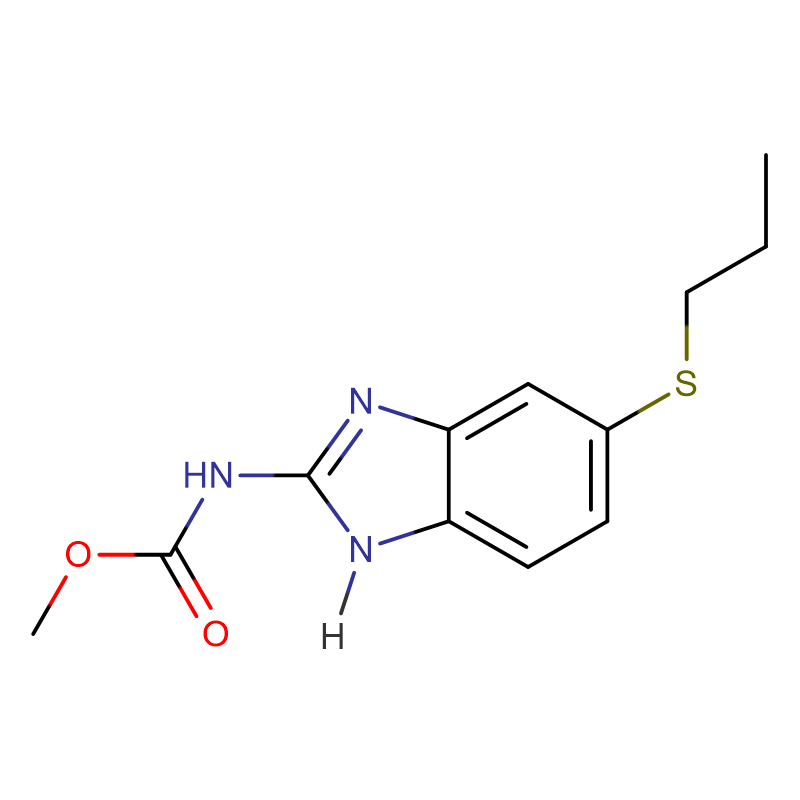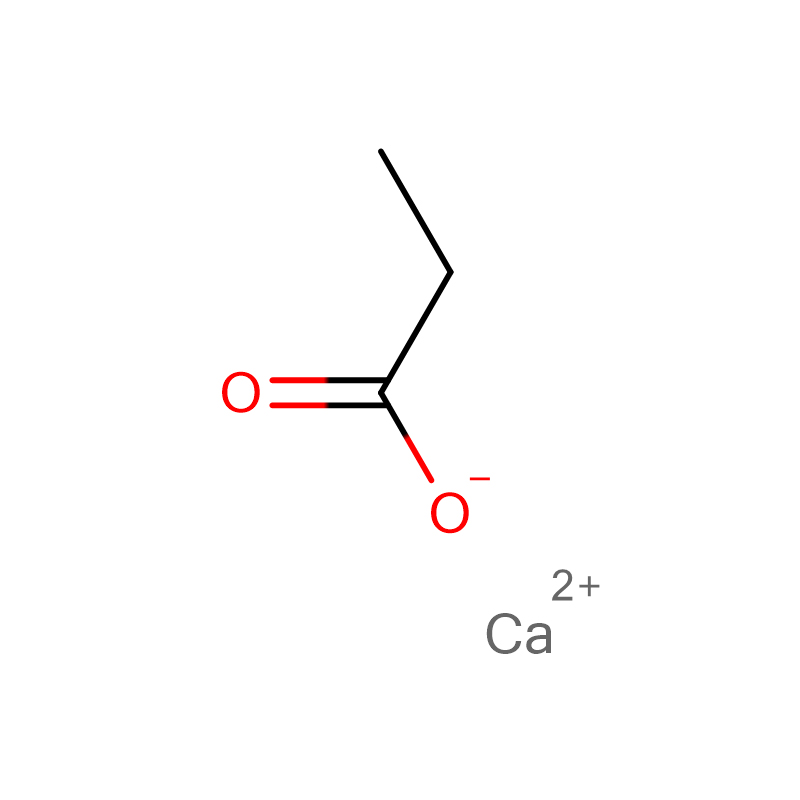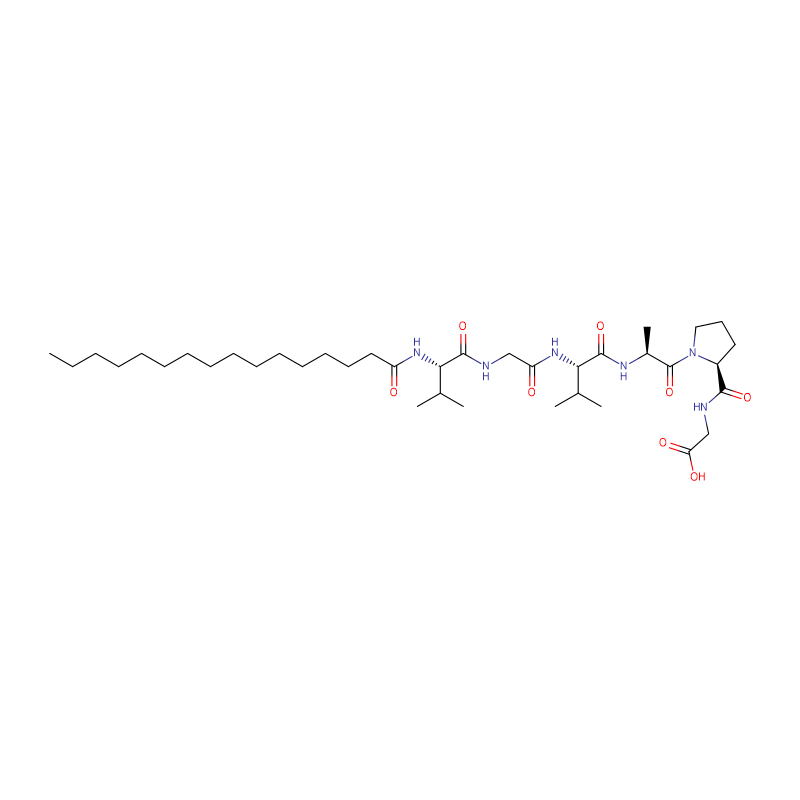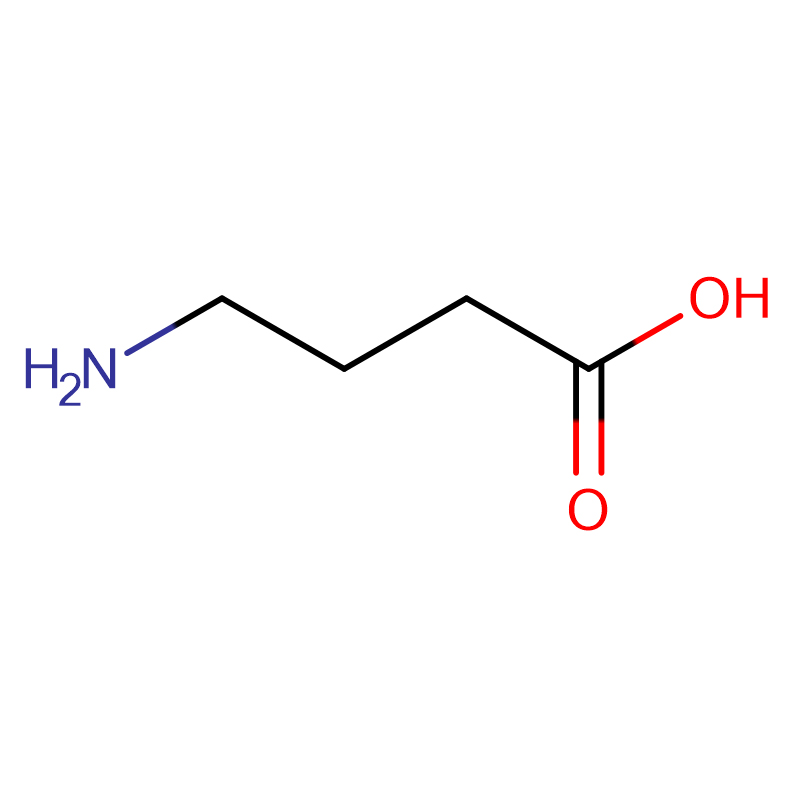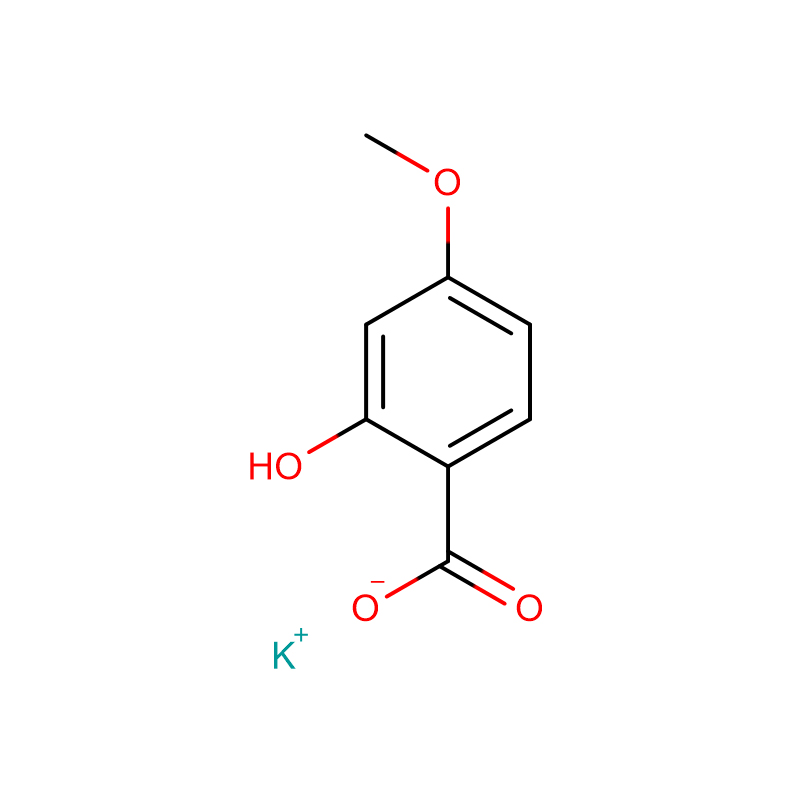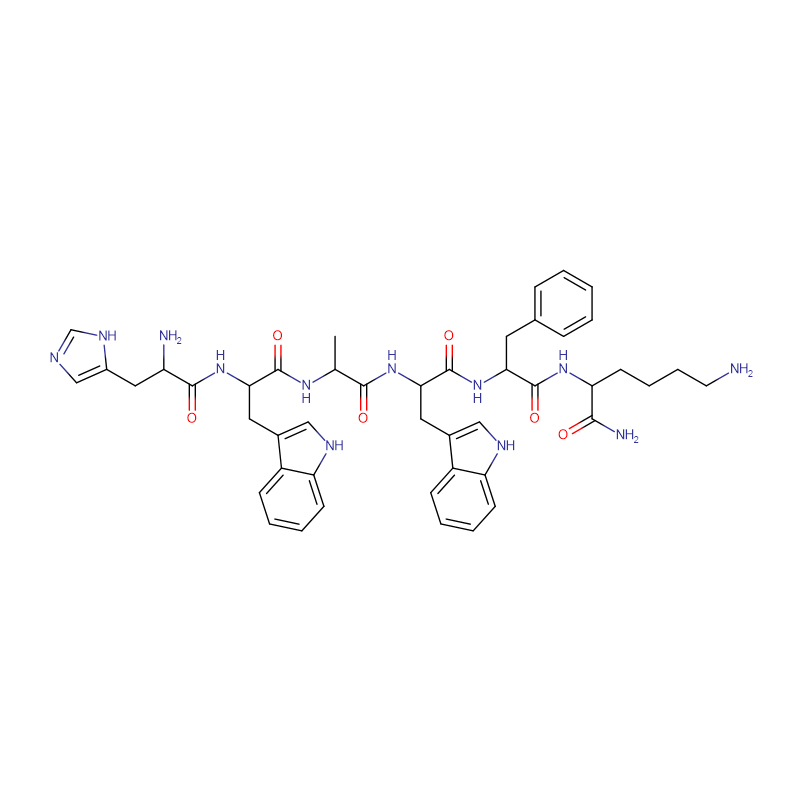Albendazole Cas: 54965-21-8
| Catalog Number | XD91873 |
| Product Name | Albendazole |
| CAS | 54965-21-8 |
| Molecular Formula | C12H15N3O2S |
| Molecular Weight | 265.33 |
| Storage Details | 2-8°C |
| Harmonized Tariff Code | 29332990 |
Product Specification
| Appearance | White crystalline powder |
| Assay | 99% min |
| Melting point | 208-210 °C |
| density | 1.2561 (rough estimate) |
| refractive index | 1.6740 (estimate) |
| solubility | Practically insoluble in water, freely soluble in anhydrous formic acid, very slightly soluble in methylene chloride, practically insoluble in ethanol (96 per cent). |
| pka | 10.72±0.10(Predicted) |
| Water Solubility | 0.75mg/L(209 ºC) |
Albendazole is a drug used to treat infections caused by parasites. It can be given to treat a rare brain infection (neurocysticercosis) or it can be given to treat a parasitic infection that causes important diarrhea (microsporidiosis).
A derivative of benzimidazole, albendazole is a drug with a broad antihelmintic spectrum. It exhibits an antihelmintic effect against sensitive cestodes and nematodes by blocking the process of glucose uptake by the parasites, which is expressed in the depletion of glycogen reserves and subsequent reduction in the level of adenosintriphophate. As a result, the parasite stops moving and dies. It is used upon infection of Acaris lumbricoides, Ancylostoma duodenale, Necator americanus, Enterobius vermicularis, and Trichuris trichiura. Synonyms of this drug are SKF 62979 and others.
Methyl 5-(propylthio)-2-benzimidazolecarbamate (Eskazole,Zentel) is a broad-spectrum anthelmintic that is not currentlymarketed in North America. It is available from the manufactureron a compassionate use basis. Albendazole is widelyused throughout the world for the treatment of intestinalnematode infection. It is effective as a single-dose treatmentfor ascariasis, New and Old World hookworm infections,and trichuriasis. Multiple-dose therapy with albendazole caneradicate pinworm, threadworm, capillariasis, clonorchiasis,and hydatid disease. The effectiveness of albendazole againsttapeworms (cestodes) is generally more variable and lessimpressive.
Albendazole occurs as a white crystalline powder that isvirtually insoluble in water. The oral absorption of albendazoleis enhanced by a fatty meal. The drug undergoes rapidand extensive first-pass metabolism to the sulfoxide, whichis the active form in plasma. The elimination half-life ofthe sulfoxide ranges from 10 to 15 hours. Considerable biliaryexcretion and enterohepatic recycling of albendazolesulfoxide occurs. Albendazole is generally well toleratedin single-dose therapy for intestinal nematodes. The highdose,prolonged therapy required for clonorchiasis orechinococcal disease therapy can result in adverse effectssuch as bone marrow depression, elevation of hepatic enzymes,and alopecia.
Albendazole has a broad spectrum of activity against intestinal nematodes and cestodes, as well as the liver flukes Opisthorchis sinensis, Opisthorchis viverrini, and Clonorchis sinensis. It also has been used successfully against Giardia lamblia. Albendazole is an effective treatment of hydatid cyst disease (echinococcosis), especially when accompanied with praziquantel. It also is effective in treating cerebral and spinal neurocysticercosis, particularly when given with dexamethasone.Albendazole is recommended for treatment of gnathostomiasis.


